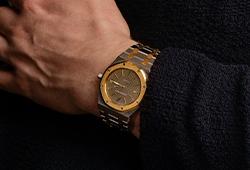Matthijs Voet, attributed to
King David and Abigail
Panel 126 x 212 cm.
Alkuperä - Provenienssi
According to family tradition, the painting was part of Princess Ulrika Eleonora of Denmark's dowry when she married King Karl XI of Sweden in 1680, as an allegory of this event. In the inventory after Queen Ulrika Eleonora the Younger's death, which was drawn up between 1742-45, a "Historical piece about David and Abigail" is mentioned, which may possibly have been an inheritance from her mother, as Ulrika Eleonora the Younger was not known as an art collector. During the 19th century, the painting was owned by the secretary of the House of Nobility, Oscar Silfversparre (1832-1910), and then passed down to his descendants.
Muut tiedot
The subject of the painting depicts the meeting between King David and Abigail, the wife of the wealthy Nabal. Against her husband's wishes, she brings food and drink to the king in an attempt to calm his anger over Nabal's greed and unwillingness to help. After Nabal's sudden death, King David took her as his wife (I Sam. 25).
Only two artworks by the artist are known, created for St. Paul's Church in Antwerp. These two works can be dated to 1617/18 based on a document in the church's archive. Information about Matthijs Voet is largely nonexistent. He was likely from a prominent artist family in Antwerp, where engraver Alexander and portrait artist Jacob Ferdinand were also members.
We would like to express our gratitude to Drs Jan Kosten and Mrs Suzanne Laemers of the Rijksbureau voor Kunsthistorische Documentatie, The Hague, for proposing the attribution to Matthijs Voet based on photographs.















































































